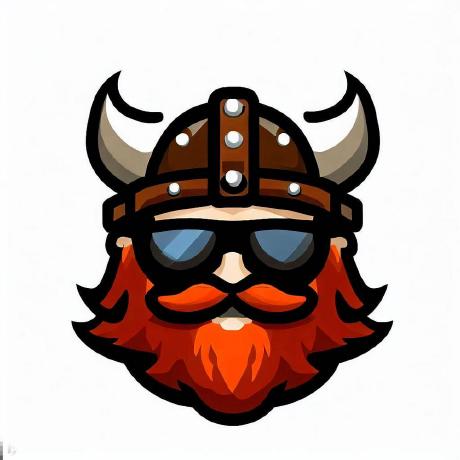I have the feeling I’ve always had a weak back.
Some 4 months ago I started working out regularly. Now I can almost touch the floor with my hands without bending my knees.
While doing this exercise I heard a small crack on my back, nothing serious.
Since then I can lift weights easier than before but my back still hurts a bit. My back doesn’t hurt as much after coming home from work, which was normal before.
What else could I do to have a stronger back?
I’ve been shaving since I was 12 years old (I’m 40 now). For most of those shaving years, I liked to get really close to the mirror, to ensure I didn’t miss a spot, so I always leaned far over the sink to get that close shave.
Unbeknownst to me, spending decades leaning unsupported over the sink for 7-10 minutes every morning gave me very strong lower back muscles, which also helped to stabilize my core. I never had back problems, even when all my friends, family, and coworkers started to develop back pain later in life.
About 7 years ago, I discovered the wonders of shaving in the shower. I put a small mirror on my shower wall and shaved without all the additional hassle of cleaning a sink and counter. It was wonderful… except I wasn’t doing my morning lower back routine because I could stand upright, right next to the mirror. My lower back started getting weaker over time.
About 4 years ago, I slipped while going down my stairs and landed hard, injuring my back. I used to be able to bounce back from a fall like that, but I actually had to go to the ER to ensure I hadn’t broken something; I couldn’t even sit up straight without pain.
The pain lessened but never really went away and I found myself finally stuck with permanent back pain.
I’m considering getting rid of my shower mirror and shaving over the sink like I used to, to help rebuild my lower back muscles and better support my spine. My wife deals with permanent back pain thanks to degenerative disc disease, and the things that helps her the most is building a stronger core and lower back muscles, to take the support away from the areas that want to cause pain.
It depends on the cause of your back pain so I agree with the people who said maybe see a doctor. Some people have weak back muscles so strengthening exercises help. My back pain was caused by tight hamstrings and overuse of my back, so I fixed it with a lot of hamstring stretches and getting out of my office chair as much as possible. My brother in law has a bulging disc so neither of those things would help him.
Probably the biggest help for me was WFH so I could get out of my office chair - I can lie down, walk around, or sit in different chairs when I’m taking a break, and I take a lot of breaks. I stretch my hamstrings after most workouts so I’m warmed up. I bend over to touch my toes with my feet together for 90 seconds, starting gently, breathing as I relax, and slowly increasing the stretch a little as my muscles loosen up. Then I take a 30 second break, then I move my feet to somewhere width apart and do another 90 second slow hamstring stretch. Another 30-second break, then I put my feet about halfway to a split and do a other 90 seconds touching the ground. Then a break then as wide as I can go and bend over to touch the ground. I think the slow process really helps me relax.
Yoga, specifically Hatha Yoga or Ashtanga Yoga with focus on the secondary series (there are 6 total).
I’d highly recommend to start out with classes and a suitable instructor though, there are a bunch of specific warm-ups to loosen some muscle groups and stretching certain areas that allow you to get into the required postures, trying to raw-dog those can lead to injuries if you force your stiff body into some positions it’s not used to.
If all you want are basic exercises to cycle through on a daily basis, 4-8 weeks of guided training is already enough to know what and how to do, you can continue with youtube from then on.
I have ADHD and this means for me that I cannot sit motionless. Every few seconds I move on my chair, change my posture etc.
That is all the excercise for my back. So far it has worked.
OK, but how do I ADHD myself?
LOL. I have no idea.
For me, bouldering has helped a lot. If you already have chronic pain definitely talk with a doctor or physical therapist first though. If you aren’t paying attention to your body it’s also very easy for climbing to fuck you up more. It’s a great combo of core and back strength though that can really help with a lot of things
Sun salutations every morning.
Tai Chi for staying limber
Hit up exrx.net and look for weight lifting exercises that target back muscles specifically. For lower back (erector spinae), thing like weighted hyperextensions are going to target it specifically. I would suggest doing about 12 weeks where you start you back workout with basic compound lifts–deadlifts, squats, bent over barbell rows–and progress to more isolating lifts like hyperextensions at the end of the workout. I would suggest doing that 12 weeks with just 1-2 sets of 12-15 reps for each exercise, with rests of 30-90 seconds between sets and exercises; that will get your body ready to progress to more sets at higher weight and reduced repetitions. And yes, you need to change you workout every 3-4 months or so; that’s a basic principle of periodization. Changing your workout will mean more or fewer sets, with lower or higher numbers of repetitions, and different weight. In general, you’ll do a few sets of high repetitions with lower weights, and more sets of low repetitions with higher weights.
Also, don’t forget to do abdominals; those are important stabilizing your back.
For cardio, rowing is going to be your go-to choice for a strong back.
I would strongly suggest getting a personal trainer for a few sessions specifically to work on your form for squats, deadlifts, etc. If you do that though, be very, very firm with them that the only thing you want is direction on form; PTs will have a strong tendency to try and sign you up for months or years of training that may or may not help with your specific goals. Look for trainers with ACSM or NSCA certifications only (most other certs are barely worth the paper they’re printed on), ans a BS in kinesiology or exercise science.
This is my own personal experience. I am not a medical doctor. I hold no degrees. However, I’m confident that I know what I’m talking about here.
Get yourself a short fat girl. Like 5’3, but 220lbs.
I hurt my back in 2011. I was walking bent over for like 2 months. I was also dating a fat girl at the time.
I had her give me a massage, but it didn’t do anything. I was like “it needs to be HARDER!!!”
Somehow we got to the point where she was walking on my back. I felt like I was being squished in the best possible way. When she was done, I was able to walk upright. Still in pain, but not so much pain that I was forced to be hunched over.
We did this every day for a week. Suddenly my back was fine. Then we kept doing it because it just feels good.
So yeah. That’s my back pain relief advice. Get a fat girl.
Why short?
My go to is dynamic exercises that forced you to stabilise the core. Kettle bell swings (including one handed variants), halos, around-the-world, atlas swings etc. Thus combined with mobility drills from the hip (where many back muscles start) and up takes for me care of any after work pain.
Climbing
Aaaaand now I have arthritis
Pull-ups were the key for my back. Once I could complete a set of 10 with body weight only it was like magic. Though, I do think that the pull-ups forced me to strengthen my core, which had a major impact. Then once those muscles were able to keep up it made everything else easier too.
Not diminishing the effects of stronger back muscles but the stretch and decompression of the spine in the hang part does it’s part. I love that bit, just hanging there getting stretched from arms to arse.
I’ll second the importance of core for avoiding back pain. I do mostly abs focused core workouts and that helps a lot for me personally.
Yoga in general and deadlifts are what I do. Back extension in both directions laying on your belly on a bench is good for strengthening it safely, start with small range of motion and extend it as you can.
Remember a few things - we spend more time bent forward than back, so make sure to strengthen the back in the arched direction as well. The whole body is connected so develop it in a balanced way. And move in every direction (intentionally). That last one is what yoga is so good for.
I’m on the yoga train. Specifically downward dog into a bunch of cat/cow’s mixed in with other stuff.
deleted by creator






